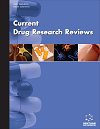
Full text loading...

Alzheimer's disease (AD) is a progressive neurodegenerative disorder primarily marked by amyloid-beta (Aβ) plaque accumulation and neurofibrillary tangles, which lead to cognitive decline. Oxidative stress and neuroinflammation are key contributors to the disease's progression, with elevated production of Reactive Oxygen Species (ROS) exacerbating neuronal damage. Coenzyme Q10 (CoQ10), a naturally occurring antioxidant, has been identified for its potential neuroprotective effects due to its roles in mitochondrial function, energy production, and antioxidant defense. The cytokine interleukin-17 (IL-17) is also implicated in AD, promoting neuroinflammation by disrupting the blood-brain barrier (BBB) and activating glial cells. This review explores the impact of CoQ10 on neuroinflammation and oxidative stress in AD, focusing on its role in mitigating IL-17-mediated pathways. Preclinical studies indicate that CoQ10 reduces Aβ plaques, improves cognitive functions, and restores mitochondrial stability. However, clinical trials have yielded mixed results, often limited by bioavailability challenges. This research highlights the necessity of further human trials better to understand CoQ10's therapeutic potential in AD management.

Article metrics loading...

Full text loading...
References


Data & Media loading...